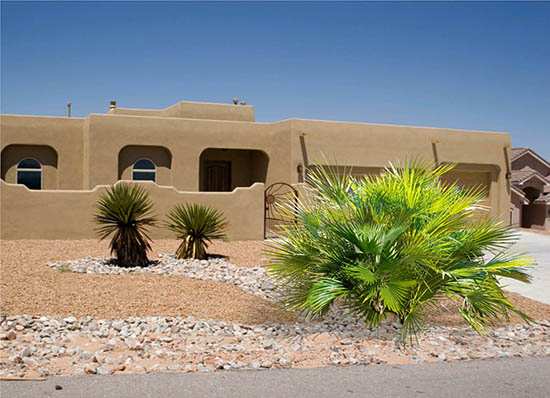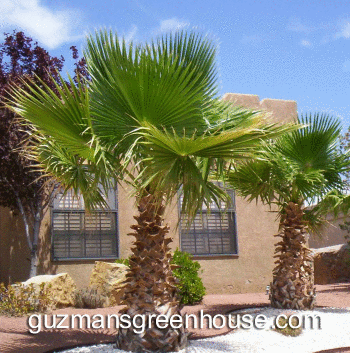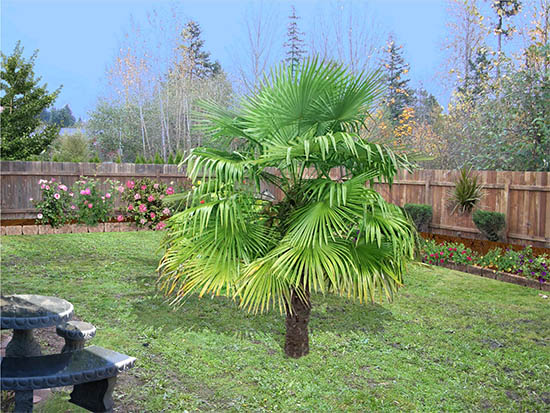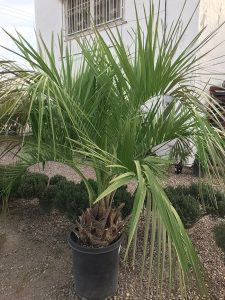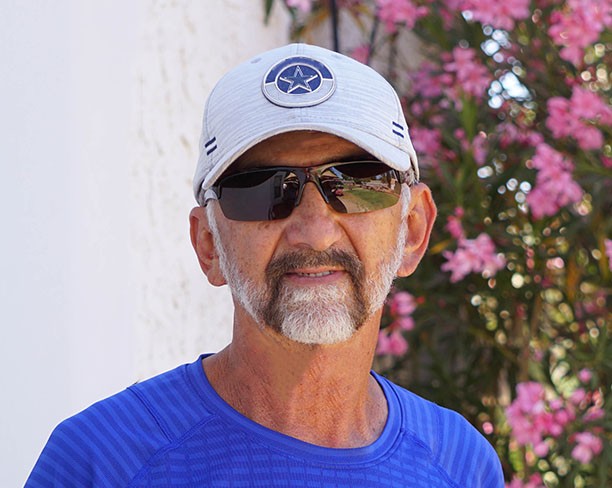Last updated on January 3rd, 2024 at 07:15 am
What is the difference between palm trees? Palm trees are in the Plantae Arecaceae family and will do great in warm and tropical areas of the U.S. They are drought-tolerant once they become established. But, the cold hardiness varies among the thousands of types of palms. This post will describe the most common Palm trees that grow in the southern and southwest parts of the U.S.
Palm Tree Information
Most palm trees can grow in the lower elevations of the south and the Southwest U.S. From Florida to the southern parts of California and of course the state of Hawaii. The purpose of this post is to show the differences between palm trees mainly for backyard or home landscaping purposes. But first, what is the lifespan of most palm trees?
How long do palm trees live?
Good question…about 80- maybe up to 100 years if conditions are right in the area it was planted. According to Wikipedia, there are over 2,600 palm tree species.
In colder regions of the southwest, it is best to leave the dried-up fronds on the tree before trimming them off. The dried-up fronds will act as a coat around the Palm tree during cold snaps. Remember to trim them off when the last hard cold freeze passes. This will help with new growth.
Palm trees are drought tolerant but best to provide them with plenty of water during the first 1-3 years after initial planting. For fertilizing use manganese or magnesium to help with growth and greenery. As an organic substitute use a bone meal fertilizer.
Phoenix Palms
The Phoenix palm (Phoenix canariensis) is also called the date palm. It will eventually grow to over 100 ft. tall and the trunk will get 4-5ft. wide. They are the most recognizable palm trees in the U.S. today and are prevalent in the City of Phoenix. They produce beautiful tall arching fronds that will give shade. This palm is native to the Canary Islands thus its other name is “Canary Palm”. Like other palms, the trunk does resemble a large pineapple. The one thing they don’t like is consistent wet conditions. It will develop root rot if the root system does not get a chance to dry out.
The Phoenix Date palm (Phoenix dactylifera) looks like the Phonenix Canariensis palm but will produce edible date fruit.

These palms are in the Pinnate family meaning their fronds are feathery as opposed to a fan palm.
USDA Hardiness is zone 8-12.
A fan palm is a Palmate palm meaning a fan palm. Both do well in rock/xeriscape landscape design.
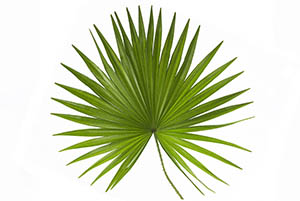
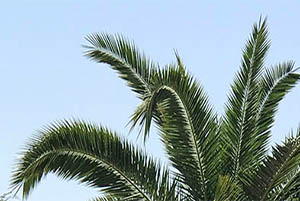
Mediterranean Palm
The Mediterranean Palm – Chamaerops humilis. Also, called the European fan palm. This palm is an excellent choice for the southwestern desert landscape. It tolerates cold temperatures down to about 10 degrees Fahrenheit. However, a young newly planted Mediterranean palm will have a challenging time growing during its first 1-3 years with temperatures below 10°. The solution to keeping it alive when temperatures get cold is to use a cover for freeze protection. Anything will help including Plant thermal blankets. USDA zone 8-11
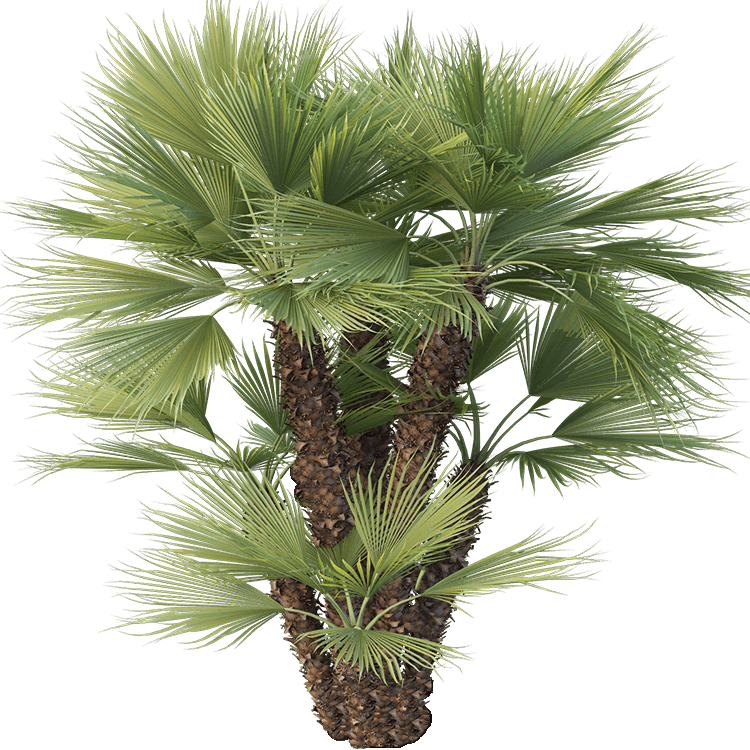
California Fan Palm

The California fan palm (washingtonia filifera) is often mistaken for the Mexican fan palm and Vice Versa. The biggest difference is the height and width of the palms. So, let us get this straight now. Mexican fan palms will grow up to 100 ft. tall and about 3-5 ft. wide. The photo above shows some large majestic California palm trees. The bottom dead foliage of the fronds is called “Palm Petticoats” and should be trimmed off before or during the spring seasons.
The photo above also shows the bark having been removed to give it a nice smooth trunk. The photo below is a California Palm before the bark has been removed.
The California fan palm will grow up to 50 ft. tall and about 7-8 ft. wide the main difference is the trunk size. The cold tolerance of this Palm tree is about 10° Fahrenheit. Any colder than that and they will have a tough time coming back after the first year of planting.
Mexican Fan Palm
Mexican fan palm (Washingtonia robusta) will grow up to 100 ft. tall and only 3 maybe 4 ft. wide at the base. It is often confused with the California fan palm. This palm tree will tolerate freezing temperatures but only to about 20 – 15° Fahrenheit. It is native to northern Mexico and thrives in and around the Southwest in local city landscapes.
USDA zone 9-11 but can grow in zone 8 if you protect the tree during its first 2-3 after initial planting. Best to use a thermal plant blanket when temperatures dip into the lower twenties during the winter months.
The Windmill fan palm
Windmill Palm (Trachycarpus fortunei) Grows in USDA zones 8-11. A very good hardy fan palm tree with an attractive, compact crown and large, stiff stems, green foliage, and distinctive hairy black fibers covering its slender, graceful trunk. A good-looking palm that makes a tropical statement around the pool or small landscape and rock or xeriscape gardens. The windmill palm will grow up to 20ft. tall sometimes taller if conditions are just right. The width at the top including fronds will grow about 10-15 ft. wide.
The Pindo Palm
Pindo Palm (Butia capitata) is a good cold-hardy palm it can tolerate temperatures down to 5° Fahrenheit, which’s cold for a palm tree. It’s a palm tree that can also be planted in partial shade, a very hardy tree for colder regions of the Southwest or South. This palm will grow up to 20 ft. tall. Here is good online information on the Pindo Palm.
Grows in USDA zones 8-11.
Sago Palm
The Sago Palm plant is not a real palm, it is a cross between a fern and a conifer. They are classified as cycads and they will have a challenging time growing in regions where temperatures get below 20° Fahrenheit. It is a tropical palm tree and does well in containers for indoor decoration. The Sago Palm will grow in cooler regions outdoors providing you cover it during the first 2-3 years after it has been planted. It is a slow grower eventually growing up to 8-10 ft. tall and about 4 ft. wide.
Most folks tend to overwater this plant, and it is best to let it dry completely before watering again. Be sure your container drains well, too much water on the root system, and it will develop root rot. You can also place them in areas where there is low light. If the older leaves turn yellow it is safe to trim off, however, if new growth is yellow this means there is an iron deficiency. Use iron or Ironite to keep leaves dark green. Straight nitrogen fertilizer is also good but best to be careful as too much nitrogen and it will burn the root system. What is Fertilizer?
USDA zones 9-11.
Do palm trees get insects? Yes, they do but mainly in the southern states like Florida, Louisiana, East Texas, and places with lots of rain and humidity. Around the lower elevation of the Southwest insects and diseases are not a big problem for palm trees. But it does happen. Here is more information on Palm Insects and Diseases.
A date tree and a palm tree are two entirely different species.
If you have questions about this post “The difference between palm trees” please comment below.


